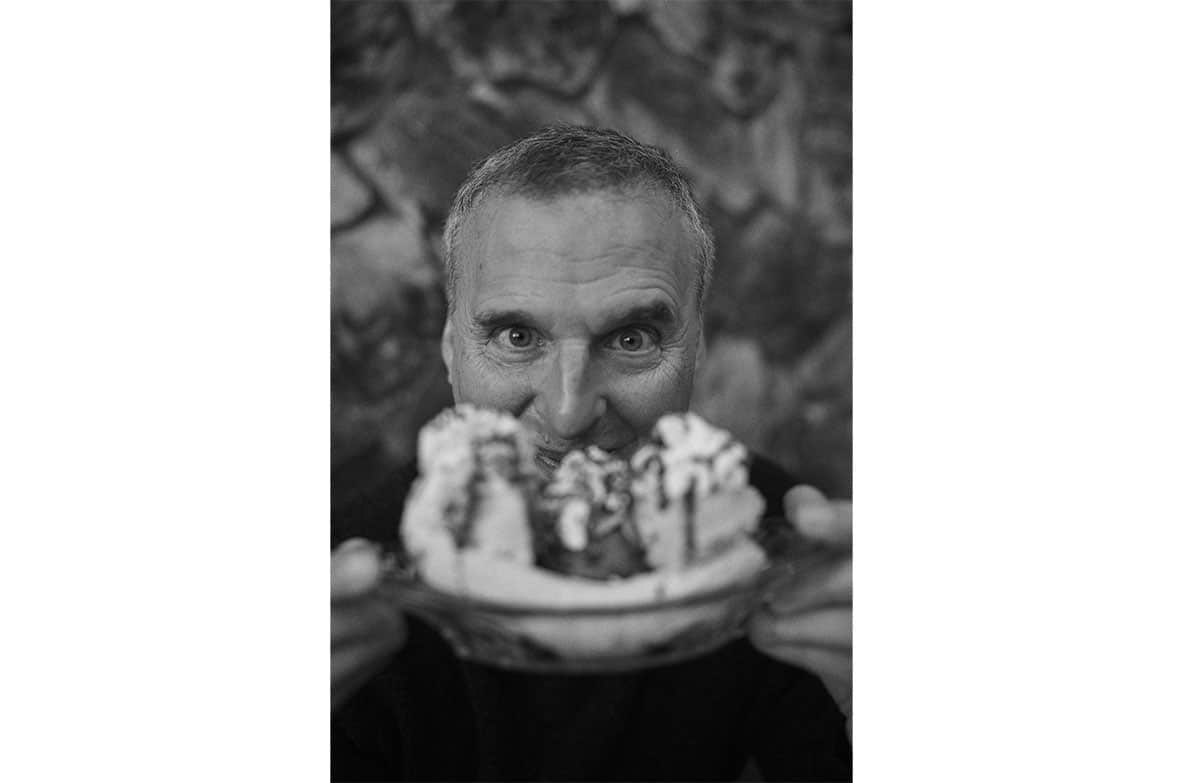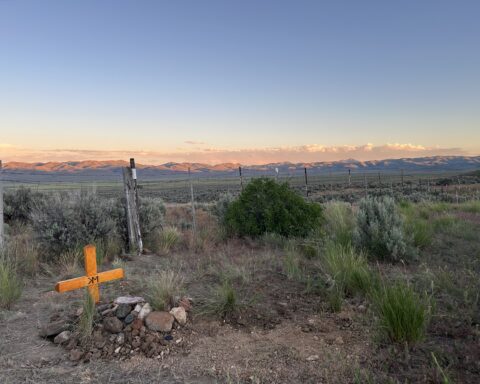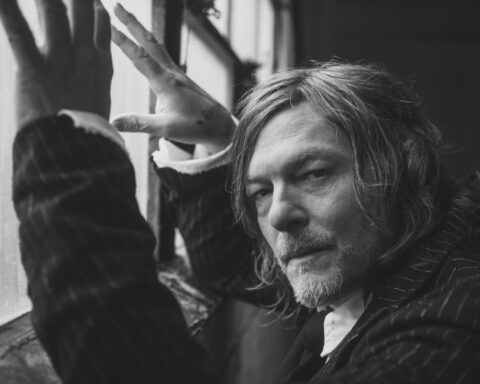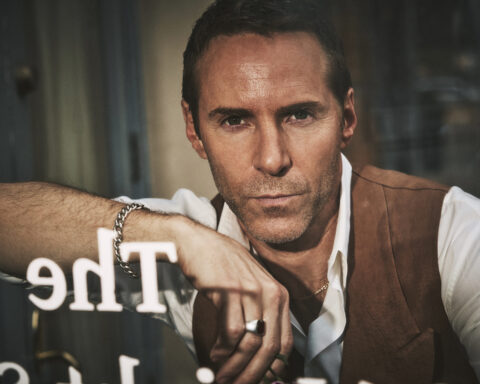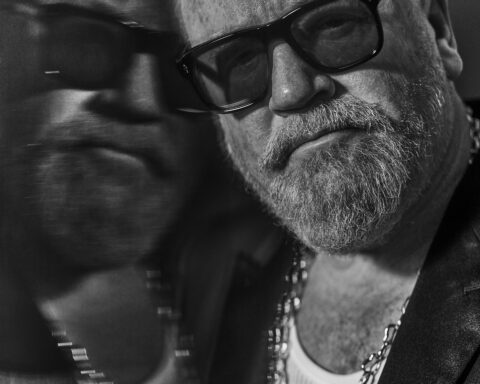When you’re invited to lunch with a man who eats out for a living, you let him choose the restaurant.
And Phil Rosenthal — host of beloved Netflix food and travel show ‘Somebody Feed Phil’ — excelled with his pick of the Clark Street Diner for our chat; a recently rejuvenated, renamed, and reopened Hollywood classic. Formerly called The 101 Coffee Shop before it became a victim of the pandemic in 2020 — and before that the Hollywood Hills Coffee Shop — the vintage diner has featured in the 1996 film ‘Swingers’, as well as episodes of ‘Entourage’ and ‘Gilmore Girls’ (and can now add Mr Feelgood’s meeting with Phil to its star-studded credits!).
Everything about this place, from the industrial strength coffee to our sharp-tongued waitress, has that comforting feel of yesteryear — much like my lunch companion, who was the creator of the wholesome family sitcom ‘Everybody Loves Raymond’ in the 90s, before reinventing himself as a globe-trotting culinary adventurer in his career’s exciting second act.
“When I moved to Hollywood in 1989, my first apartment was round the corner,” Phil explains, while ordering a tuna melt and eggs Florentine to split with his daughter, Lily, who has joined us for lunch (hollandaise sauce on the side — when you spend as much time in restaurants as Phil does, you have to set yourself some boundaries!). “We would come here at least twice a week. And then there was a writers’ strike as we were starting ‘Raymond’, and we were trying to get some scripts going but couldn’t go into the office, so we would meet in a little room out the back here.
“I love a diner, it’s the most democratic of restaurants. There’s not a person alive who doesn’t like this kind of comfort food. To find the food that I loved as a child, but elevated like this, is my very favorite thing.”
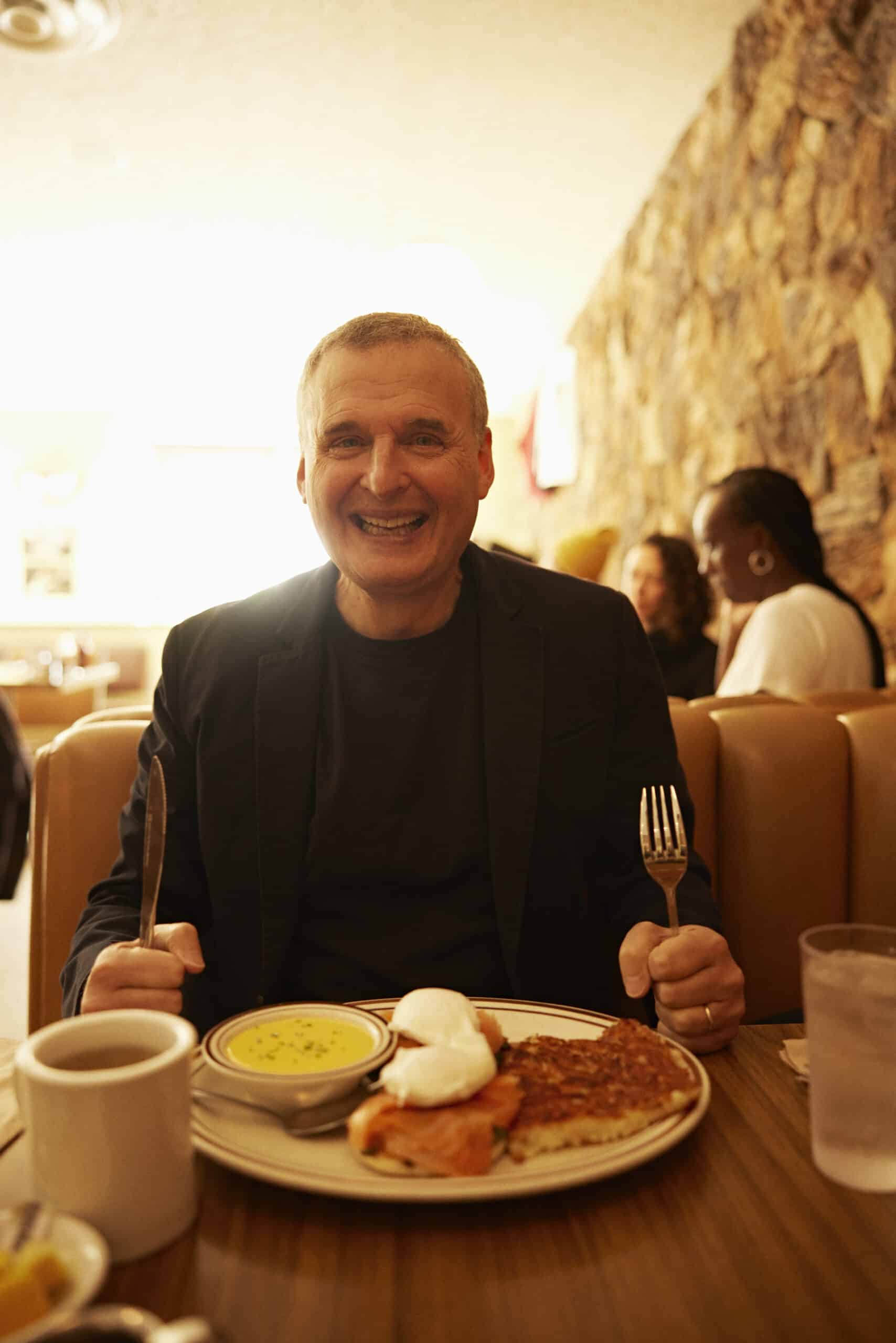
Phil’s food documentary series, which first premiered on PBS as ‘I’ll Have What Phil’s Having’ in 2015, before being relaunched in 2018 under its new title on Netflix, is the image of its creator and star — cheerful, positive, and charming. Across six seasons of ‘Somebody Feed Phil’ on the streaming giant, he has visited more than 30 cities around the world; shining a spotlight on wonderful independent restaurants and the people who eat in them. And like our mission here at Mr Feelgood, Phil uses his platform to seek out what unites us, rather than what divides us. “There’s already enough negativity out there,” says Phil, 62. “When we made ‘Raymond’, there was a conscious effort to go the other way from the hip and cool shows that were on at the time. And this show is just the continuation of that sensibility, of the world as a family.
“The news only shows the dark side of people. But the reason that’s news is that darkness is not the norm — the norm is people on both sides of an issue having lunch and getting along. I went to Israel, and found Israelis and Palestinians not just coexisting but celebrating each other’s holidays together. I went to the Mississippi Delta and found liberals and conservatives in this one town, older men who were quite stuck in their ways, who go to this beat-up diner every day, and sit at a big table they call the ‘table of knowledge’. And they argue about stuff, but they’re all friends.
“Most people want to live in peace, most people want to get along, most people want to be friends. That’s not news, but that’s what I’m looking for.”
And if there’s one thing we can certainly all agree on, it’s the love of a plate of piping hot french fries. “Food is the great connector, and laughs are the cement,” agrees Phil, delivering the line that has become something of a catchphrase. “You and I meet and we don’t know each other, but we have one thing in common — we’ve both got to eat. And if the food is half decent, it puts us in a good mood, then we share a laugh, and now we are friends.”
Phil’s open-hearted approach to life makes him friends wherever he goes. Watching the series, I am struck by how completely natural he seems as he breaks bread in such hugely varied settings and company. “Curiosity is the key to communication,” he says. “That and a sense of humor.” During our meal, two separate groups approach him for a chat and a photograph, and he happily gives each several minutes of his time, asking questions to get to know them a little, smiling and laughing throughout. He is also earning pals in high places. When I float that the tide may be turning, and that there’s a younger generation of celebrities making kindness cool, he reveals he received a note from the pop superstar whose name was on my lips, declaring himself a fan.
He says, “You know who wrote to me and likes the show very much? Harry Styles. I got a lot of points from Lily when that happened! When you hear from a fan, and it’s someone you’re a fan of, there is no greater high than that. Harry’s music is great, but it’s what he does with his power, using his power for good, that really impresses me. Everyone is welcome and celebrated at his shows. That’s how it should be, and what we want to see more of in the world.”
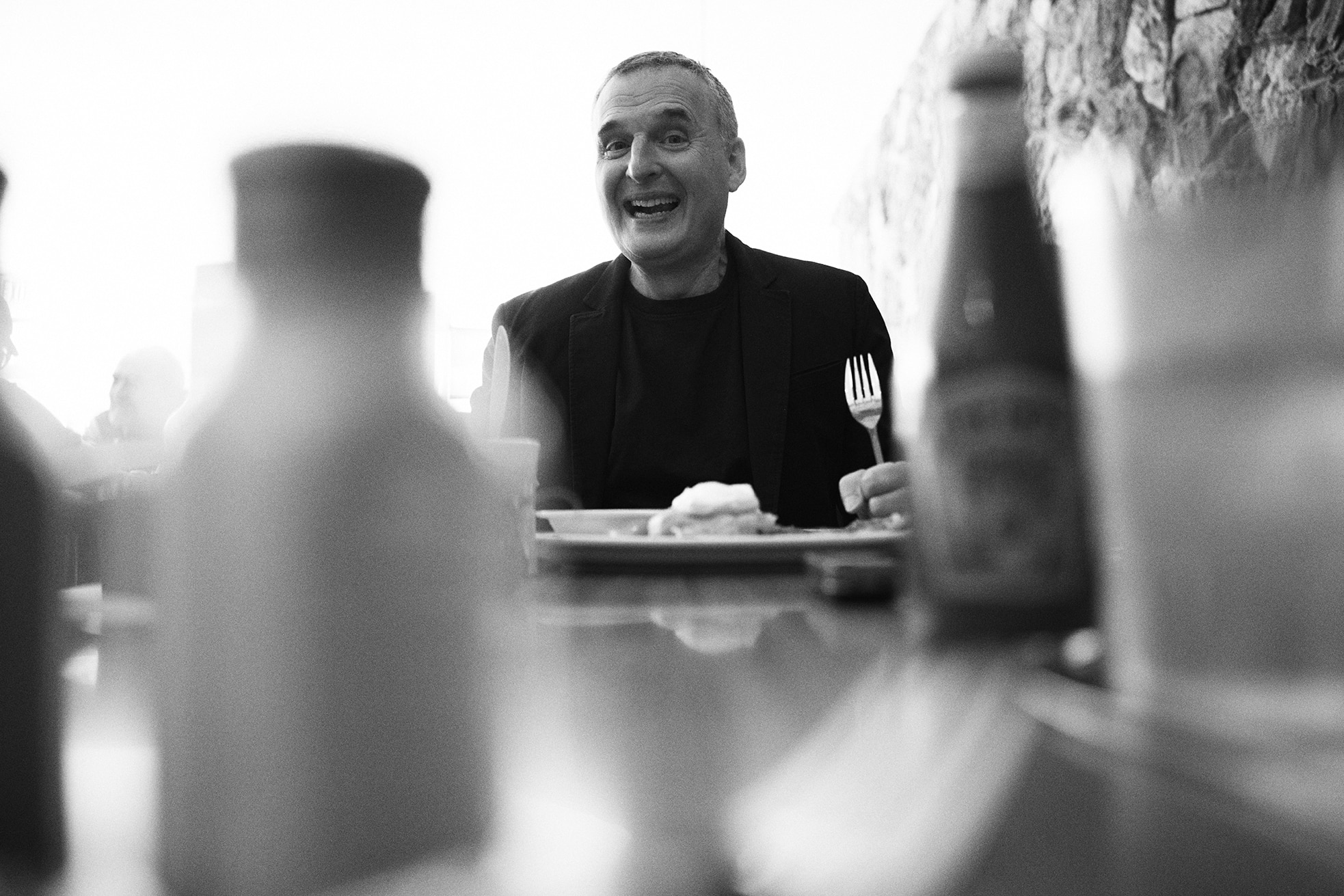
Two things in particular strike me about how Phil has succeeded in the world of showbusiness. Firstly, he leads with positivity and compassion, and earned a reputation for being a considerate and inspiring boss during his time as the showrunner of ‘Everybody Loves Raymond’ — a breath of fresh air in the often needlessly cut-throat world of entertainment. And food was the cement back then too.
“In addition to just being nice, and doing work that people can feel good about, the best way to show that you care about people is to give them good food,” he says. “I worked on many shows where craft services were just potato chips and candy. On ‘Raymond’, we hired a cook to make fresh soups and sandwiches every day, and once a year we would get these crab claws from Florida, cover the writers’ room table with newspaper, and go to town on them with hammers. Suddenly it’s a party, people love coming to work, and it engenders loyalty and a feeling that we are family — because that’s what good food does.”
I’m also impressed with the humility and tenacity it took to get his food show on air. ‘Everybody Loves Raymond’ was one of the most-watched shows in the country during its 210-episode run on CBS from 1996 to 2005, peaking with more than 20 million viewers. Yet it took ten years after retiring that Emmy-winning comedy before Phil managed to sell his next major series.
“The business changed greatly during the nine years I was doing ‘Raymond’,” he recalls. “The studios wanted more hip and edgy shows, and I am not that guy. After we ended ‘Raymond’ in 2005, I kept trying to write a new show, I wrote a new pilot every year, maybe more than one, but nobody wanted them. I don’t write sexy stuff, I don’t write edgy stuff. I couldn’t change my sensibility. It’s just not me.
“But in the back of my mind I had this idea. We shot an episode of ‘Raymond’ in Italy in 2000, in which I saw [the show’s star] Ray Romano change from someone who never traveled to someone who really got it. That was the story I wrote, but I also saw it happen to him in real life. It’s fun turning people onto stuff that we like, I feel like I have value if I make your life a tiny bit better.
“But if you’ve had any success in show business, and you walk into your agent’s office, and say, ‘I’ve done the sitcom thing, what I’d love to do now is a food and travel show,’ they look at you as if you killed their parents.”

After numerous unsuccessful pitches of his idea — including in the offices of the Food Channel and Travel Channel, who both told him food and travel was no longer what their viewers were looking for — Phil cobbled together a sizzle tape from his own work-related trips which he took to PBS in 2005, and finally got a bite. He recalls, “You feel like an idiot. You’re thinking, ‘What am I doing? Is it just a pipe dream? Am I done? Am I ever going to have another show again?’ But after ten years, I got a meeting with PBS and I was ready for them with one line. I said, ‘I’m exactly like Anthony Bourdain, if he was afraid of everything.’ And that’s how I sold the show.
“The first person I called was my brother Richard, who was already a television producer, and I told him about this new gig. He said, ‘Really? They’re going to let you fly around the world and eat? What are they going to call this show, ‘The Lucky Bastard’? I said, quit your job and come and produce the show with me, and we’ll call our production company ‘Lucky Bastards.’ So that’s what we did.”
As we wrap up our date with an ice cream sundae, I ask for some tips on happiness to takeaway. Some might say it is easy to be happy with multiple millions in the bank, but the booming trade done by therapists in Hollywood proves that money doesn’t always buy contentment. So what is Phil drinking — or eating — to stay so endlessly cheerful?
“You have to wake up every morning and be grateful for what you’ve got,” he says. “Sometimes that takes some effort; because I watch the news and get depressed like everyone else, or have business stuff that gets in the way of me leading a happy life. But after every shoot night on ‘Everybody Loves Raymond’, we would gather the next morning and I would thank them for the great show the previous night, and tell them that the even better news is that we get to do another one. I’d say that we’re not just the lucky people, we’re the lucky, lucky, lucky people. I think I’m the luckiest guy you’re ever going to meet.
“And bad things are going to happen in your life, of course, but try to take them and turn them into something useful — like a sitcom.”
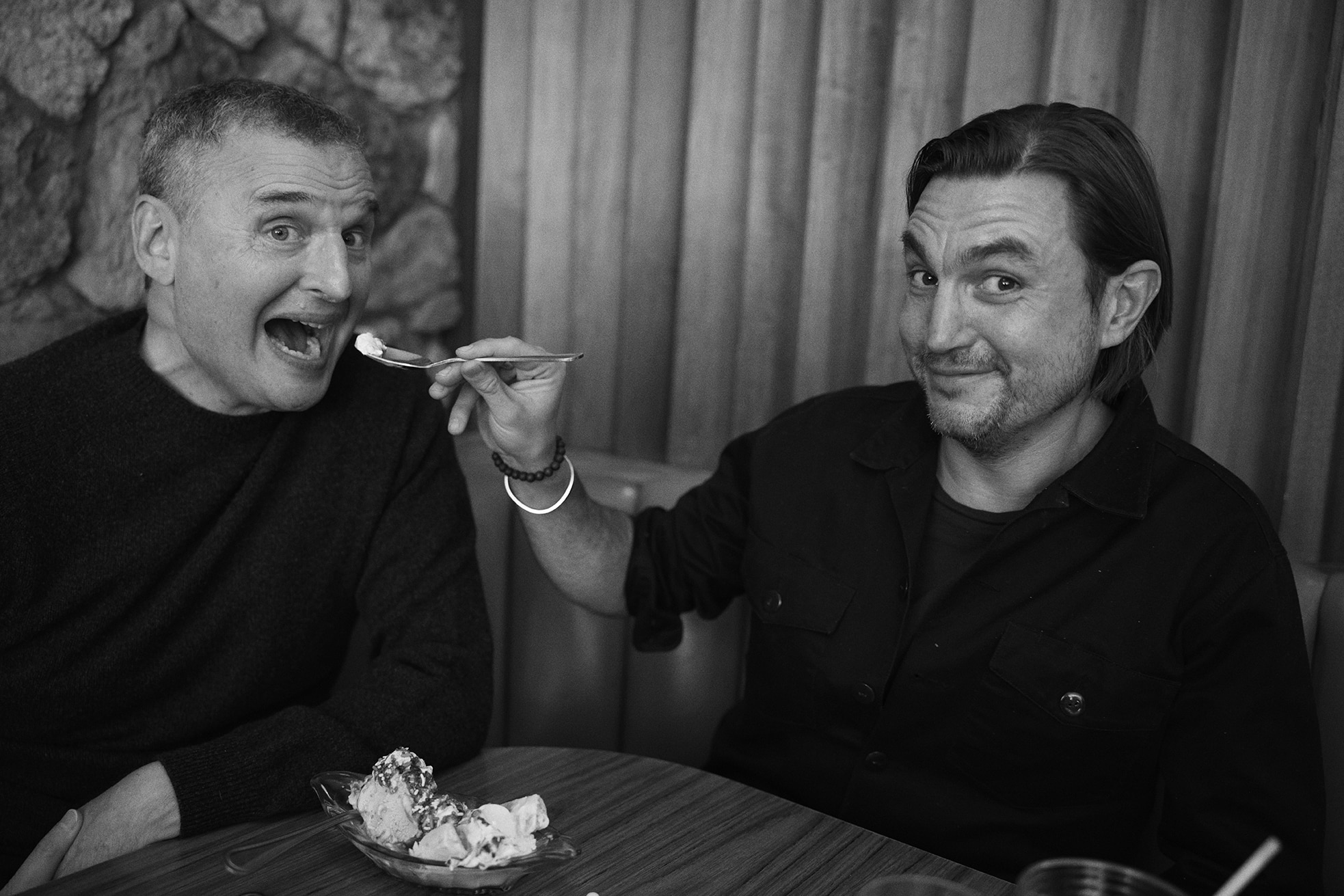
Learn more about Phil, including details of his current book tour, here


